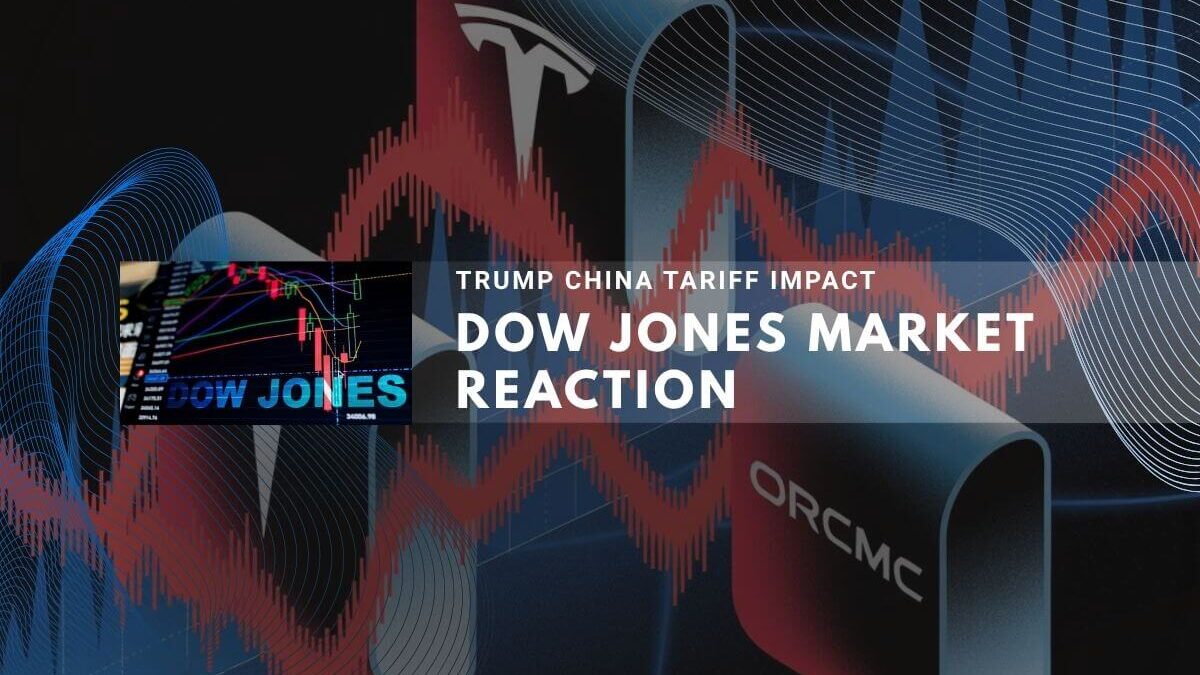U.S. President Donald Trump announced on Friday that he will impose an additional 100% tariff on all imports from China, effective November 1, in response to Beijing’s tightened export controls on rare earth minerals. The move triggered the largest single-day market decline since April, with the S&P 500 dropping 2.7% and the Nasdaq falling 3.6%.[1][2][3]
Market Sells Off on Tariff Shock
Wall Street experienced significant losses on October 10 after Trump escalated the trade conflict with China. The Dow Jones Industrial Average fell 878 points, down 1.9%, closing at 45,479.60. The S&P 500 declined 182 points to 6,552.51, while the Nasdaq Composite dropped 820 points to 22,204.43.[1][4]
The Philadelphia Stock Exchange Semiconductor Index plummeted 6.3% following the announcement. Major technology stocks extended losses after the closing bell, with Nvidia, Tesla, Amazon, and Advanced Micro Devices each declining more than 2% in after-hours trading.[1][5]
Weekly Losses Mount
The S&P 500 recorded its steepest weekly decline since May, while the Nasdaq posted its worst Friday-to-Friday drop since April. Markets had experienced relative calm in recent months before Trump’s Friday announcement disrupted the uneasy truce between the world’s two largest economies.[1][6]
Trump Targets China Over Rare Earth Controls
Trump described China’s new export restrictions as “sinister and hostile,” warning they would create difficulties for “virtually every country in the world.” The president announced on Truth Social that the 100% tariff would be imposed “over and above” existing levies, which currently range from 30% to 145% on Chinese goods.[2][3][7]
The administration also indicated it would implement export controls on critical U.S. software. Trump initially suggested canceling his scheduled meeting with Chinese President Xi Jinping at an economic conference in South Korea in two weeks, stating there was “no reason” to convene.[3][8]
Door Left Open for Negotiations
By Friday evening, Trump softened his stance slightly. He told reporters at the White House he had not officially canceled the meeting with Xi and remained uncertain about its status. “I will be there regardless,” he stated, adding “We’ll see what happens” regarding the tariff implementation.[2][8]
Rare Earth Minerals at Center of Dispute
China controls over 90% of the global supply of processed rare earth materials and magnets, which are essential for manufacturing electric vehicles, aircraft engines, military radar systems, semiconductors, and smartphones.[1][9]
On Thursday, Beijing announced that any company worldwide would need licenses to export products containing even small amounts of Chinese-sourced rare earths, particularly for chip production. The restrictions also apply if rare earths were processed using Chinese technologies.[3][9]
Additional Chinese Countermeasures
China initiated a monopoly investigation into U.S. technology company Qualcomm, potentially blocking its acquisition of another chip manufacturer. Beijing also announced new port fees on vessels linked to the United States, including those owned or managed by American companies.[2]
Impact on Technology and Manufacturing Sectors
Investors are closely monitoring how the escalating trade tensions will affect major companies with significant China exposure. Oracle, Tesla, and Taiwan Semiconductor Manufacturing Company face particular scrutiny as the tariff threats unfold.[4][10]
The intensifying trade conflict threatens significant disruptions to supply chains in the technology, electric vehicle, and defense sectors. Many U.S. companies dependent on Chinese rare earth materials have expressed concerns, with Ford previously halting production temporarily when Beijing tightened export regulations earlier this year.[2][1]
Perfect Storm of Economic Pressures
Apollo Global Management chief economist Torsten Slok warned on Saturday that the tariff announcement “couldn’t have come at a worse time.” The renewed trade war uncertainty coincides with fears of an artificial intelligence bubble raising doubts about stock valuations and a federal government shutdown that may last throughout October.[6]
The White House budget office said Friday that mass firings of federal workers have started and could total more than 4,000 employees. Slok noted that markets were beginning to believe “maybe the worst was behind us” after Liberation Day in April, when Trump’s initial aggressive tariffs wiped out over $6.6 trillion in stock market value within two days.[6]
Economic Consequences Expected
Slok indicated that the new tariff wave will have similar effects to previous rounds. “You should expect the same, namely, higher inflation and also downward pressure on GDP,” he said on Fox Business Saturday.[6]
Ryan Detrick, chief market strategist at Carson Group in Omaha, commented that “the second-largest economy and the largest economy are clashing once again, and we’re witnessing a sell-first, ask-questions-later approach as the week concludes.”[1]
Cryptocurrency Markets Also Affected
The tariff announcement triggered an 18 billion dollar cryptocurrency sell-off late Friday, demonstrating the broad reach of the trade tensions beyond traditional equity markets.[10]
Dow Futures Open Sunday Evening
Dow Jones futures markets are scheduled to open Sunday night, along with S&P 500 and Nasdaq futures. Investors will be watching closely for any signs of further volatility or potential diplomatic breakthroughs before regular trading resumes Monday.[4][8]
Markets are bracing for heightened drama when trading resumes, with uncertainty surrounding whether Trump will follow through on the November 1 tariff implementation or engage in negotiations with China.[4][8]
